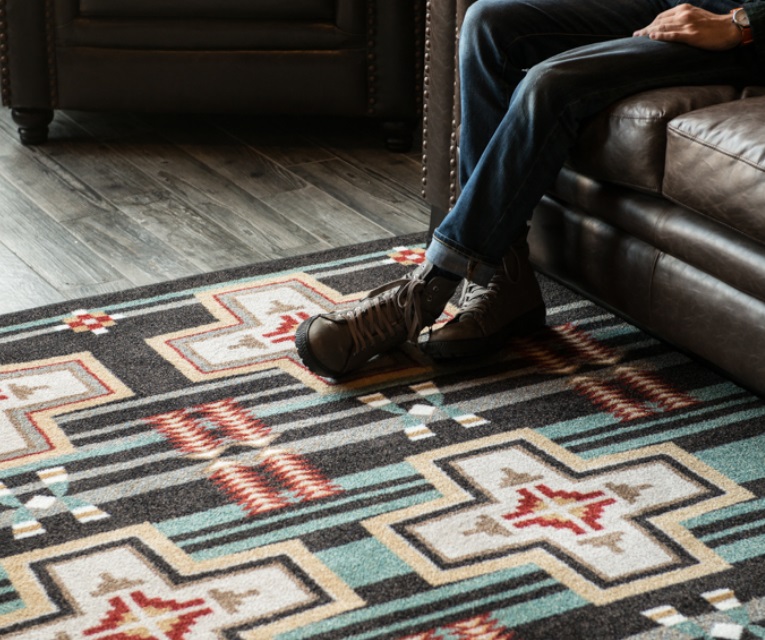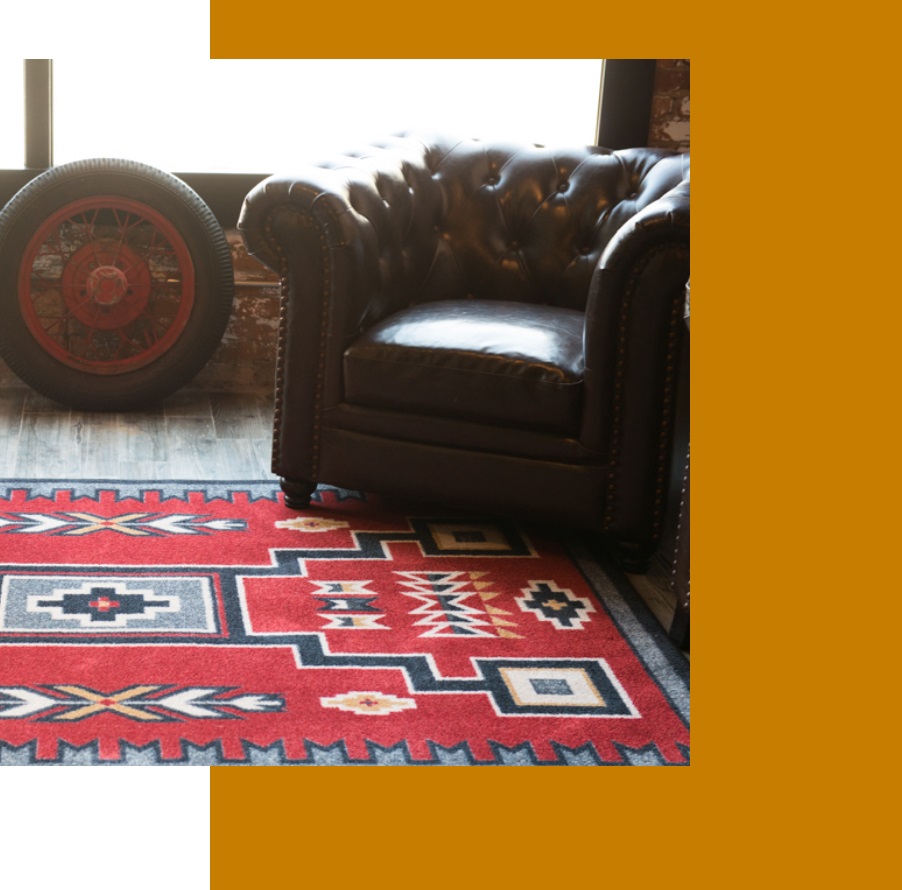
buy native american rugs
The Wide Ruins style is the most elaborate and usually themost finely woven of the banded rug styles. It evolved from the Chinle. These rugs will have broad strips of plain color, some with geometric designs and with verynarrow bands with delicate motifs, combined with thin, straight lines ofcontrasting colors. The shapes found within the broader bands are oftenoutlined with a different color. The main colors are browns, olives, maroons, and mustardsaccented with a color such as white, red, or black.


